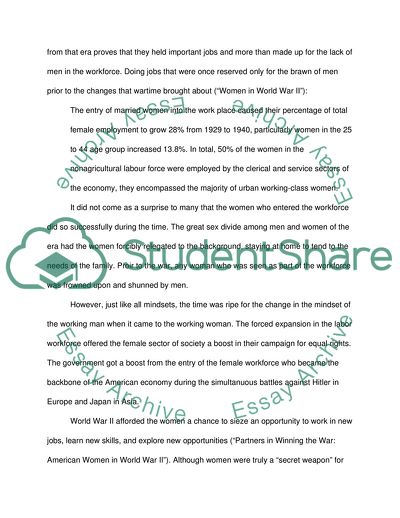Cite this document
(The Role of Women During World War II Article Example | Topics and Well Written Essays - 1750 words, n.d.)
The Role of Women During World War II Article Example | Topics and Well Written Essays - 1750 words. https://studentshare.org/history/1788283-womens-role-during-world-war-two
The Role of Women During World War II Article Example | Topics and Well Written Essays - 1750 words. https://studentshare.org/history/1788283-womens-role-during-world-war-two
(The Role of Women During World War II Article Example | Topics and Well Written Essays - 1750 Words)
The Role of Women During World War II Article Example | Topics and Well Written Essays - 1750 Words. https://studentshare.org/history/1788283-womens-role-during-world-war-two.
The Role of Women During World War II Article Example | Topics and Well Written Essays - 1750 Words. https://studentshare.org/history/1788283-womens-role-during-world-war-two.
“The Role of Women During World War II Article Example | Topics and Well Written Essays - 1750 Words”. https://studentshare.org/history/1788283-womens-role-during-world-war-two.


